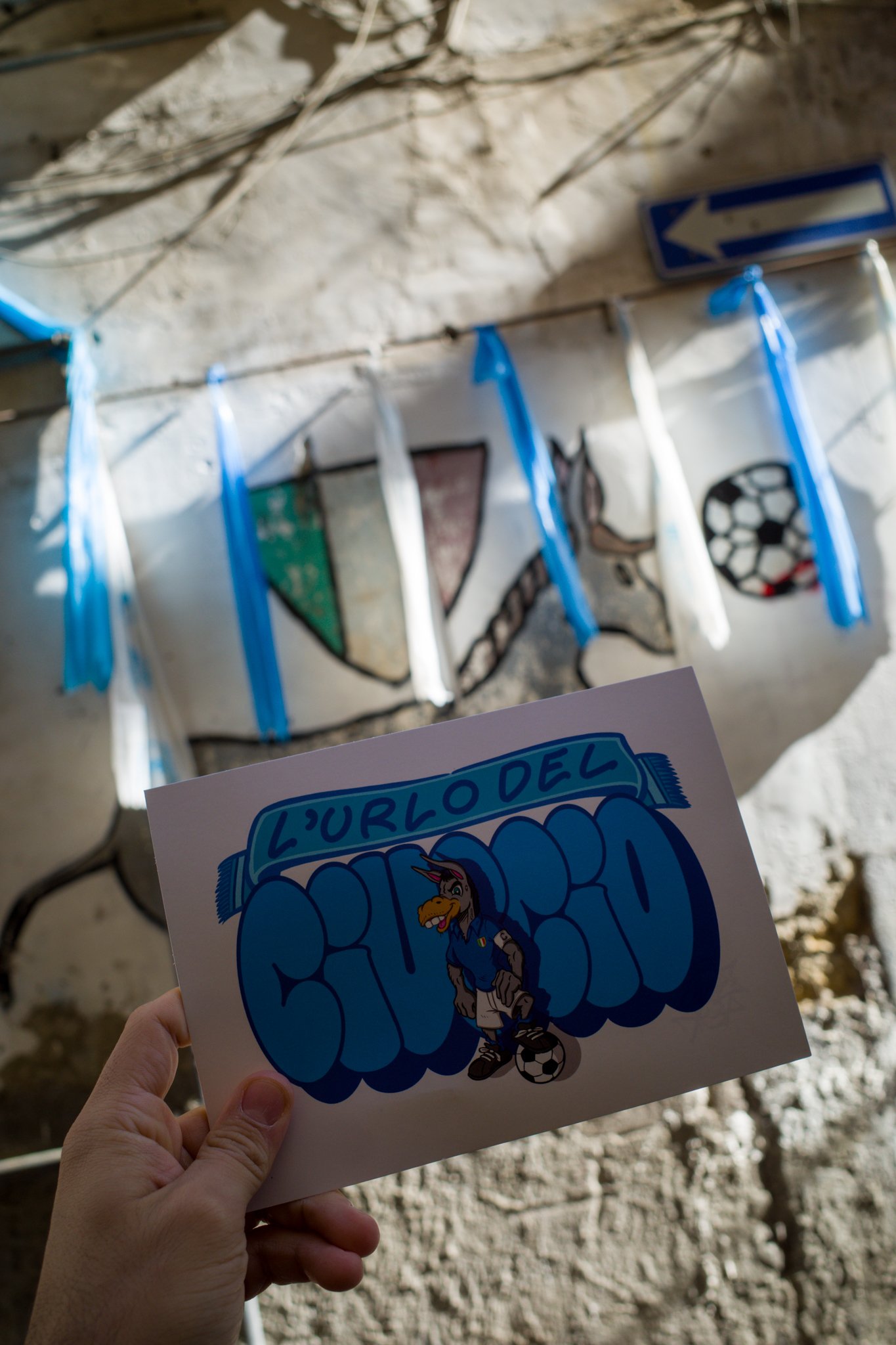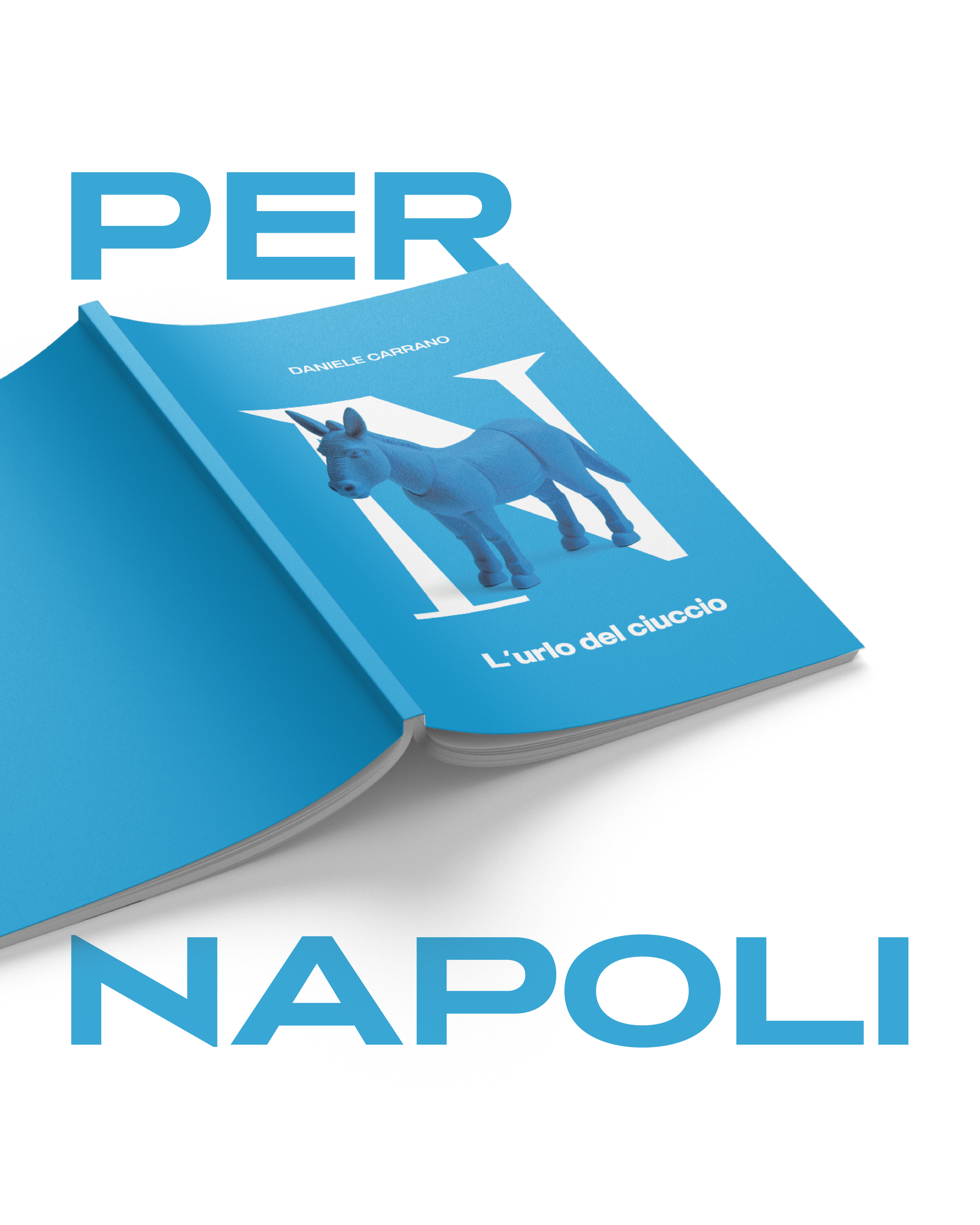After all, we do it for the city: TCD meets Daniele Carrano
This was a year like almost no other for the city of Naples. If we’re to believe all things that come in threes are perfect—as the famous Latin aphorism goes—then the Napoletani have endured that decades-long search for perfection as arduously and courageously as anyone. The third Scudetto connected two vastly different chapters of the city’s rich history in a way that only some cultural phenomena can.
From the account in Greek mythology of the siren Parthenope drowning in the bay of Naples, to Roman poet Virgil’s placing of an egg at the base of Castel dell’Ovo, to the liquefaction of San Gennaro’s blood—the city’s cultural foundations provided the base for much of Europe’s literary and artistic progress.
Today, it continues to display that tradition of cultivating art, capturing mood and celebrating difference in a uniquely Neapolitan way.
Daniele Carrano is a perfect encapsulation of that attitude. A photographer, writer, founder of Escape Vision and Curva B frequenter, his new photobook L'Urlo del Ciuccio (the scream of the donkey) follows his six-year journey documenting the city’s street art, its evolution into a tourist hotspot, the famed Maradona murals, and of course the primal scream that came with the triumph of the third Scudetto in May. Split into three chapters, Daniele’s narrative is personal, weaving together themes of family bond, collective identity and pride, welcoming (while also being rightly wary of) change, artistic freedom and of course, the city’s ties to its football team.
We asked Daniele about his evolution and process as a photographer, the significance of this moment for the city, and the future of Naples’ art and storytelling scene.
“Naples has changed but at the same time, it’s as if it has never changed. Rather it has adapted, without corrupting itself, into a new period of jubilation.” —excerpt from L’Urlo del Ciuccio
Tell us about the title: L'Urlo del Ciuccio. What is the meaning behind it, and how does it capture the themes of the book?
In 2017, I read for the first time on a wall “L’Urlo del Ciuccio." As you can see from the photos it comes from a famous chant during a game: ”the scream of the Donkey scares Marassi”, so I always thought of it as a feeling of pride and joy. They’re the same emotions that we felt during the 2022/23 season, and that I feel finding murals and telling the story of my city.
The words that inspired Dan’s latest project.
When you set out on this project, what were some of the most important themes you wanted to capture?
Since 2017 I haven't stopped, but the feelings definitely intensified with the Scudetto. In the beginning it was a daily search, being already in the city centre for University. Today I work and the weekend is the time I dedicate to the research, walking kilometres and kilometres with my headphones or with friends. Sometimes I think it's just an excuse to be with myself or to see friends and have a good time. It’s my therapy, my ritual. I'm just curious to search for some feeling.
Your journey documenting this began in 2017. How has your personal style and approach to photography changed since then?
I've been taking pictures since I was a kid, but I don't consider myself a photographer. During university and with my phone, I found my identity a little, which during the years encouraged me to buy and use others' cameras. Definitely in the beginning I was more shy and inexperienced. I remember taking the photos for the first zine almost in a hurry, with the ‘fear’ that someone would see me.
The city itself has also changed a lot since 2017. What are some of the changes you've seen, and how has it impacted your work on this particular project?
I talk about this in the book. The graffiti or even the first murals I photographed were spontaneous. In the 1980s, street art was not the same as today. Now I often have doubts about the spontaneity of the gestures, I see a lot of marketing and even some tourist traps in it. I don't doubt the love for the team but it’s not always the first thought. Naples is now overrun with murals of dubious origins and taste.
2023 was a year that the city will never forget. Does part of your work look to immortalise this period, to ensure that it retains the same level of historical importance as the era of Diego?
I hope so. For me it was a dream, not so much for the Scudetto itself but for the emotions shared in the Curva and in the city. The zine I think photographs Naples from this point of view. There are also many quotes that I hope Neapolitans catch. Calcio is just an excuse to arrive at that feeling, to share moments and to bring our city up with it. There are also some critics, there are so many things that are wrong, that this Scudetto seems to have hidden.
We've seen this year an explosion of interest in the city of Naples, both artistically and culturally. Do you think it is 'putting Naples on the map'?
Naples has never gone off the map, there are only ups and downs. Certainly when I was a child I dreamed of this Naples, but even before my family told me about a great city and before history told us. I dream of Naples as a European capital together with Paris, just like in the 1800s. Now there is a lot of ignorance and poverty, but it is a national problem.
Do you find there is greater collaboration between Naples' artists, photographers and storytellers, and how do you think the scene will develop in the future?
I am happy and honoured to be supported by so many creative people in the city. I dreamed of this when I founded Escape Vision. It is so important to meet each other and go beyond social. The zine is mine as well as so many others; I think of Alex, Joel, Ciro and the many creatives who have been with me on my weekends and sometimes even at the stadium. After all, we do it for the city. Per Napoli.
L’Urlo de Ciuccio is available now and you can order here, from Daniele’s website. Discover more of his photographic journey on Instagram @forzanapolisuimuri and @dan.carrano.





